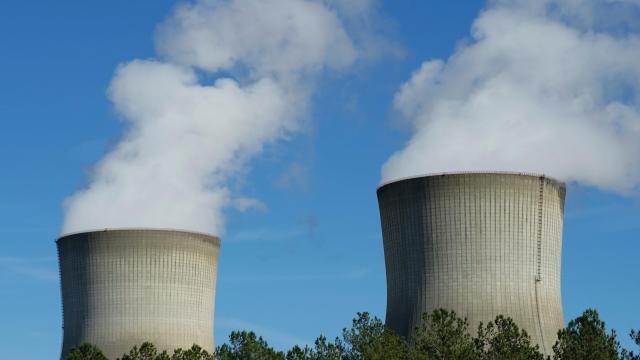It’s official: One of the new towers at the Vogtle power plant has started splitting atoms. The step brings the troubled plant in Georgia, which is years behind schedule and billions of dollars over budget, closer to providing an enormous amount of carbon-free power to the grid.
Westinghouse, the designer and operator of the two pressurised water reactors, said in a press release Monday that Unit 3 of the Vogtle plant had started the nuclear fission process, reaching a stage is known as “initial criticality,” the first step in the power plant generating electricity. The last nuclear power plant to reach initial criticality in the U.S. was in 2016 in Tennessee, at the Tennessee Valley Authority’s Watts Bar plant; these two reactors are the only two U.S. reactors to come online in the 21st century. Unit 3 should be providing power to the grid by May or June, with Unit 4 following several months behind.
The Vogtle project has taken a long and troubled road to get to this moment. The plant’s expansion to add two nuclear reactors got its first approval from the U.S. Nuclear Regulatory Commission in 2009, with an initial budget of $US14 ($19) billion and a planned start date of 2017. Units 3 and 4 are the first new nuclear reactors to be built in the U.S. in more than 30 years. (The Watts Bar reactor was mostly built decades before, but construction was halted in the mid-1980s and it sat incomplete for years before being revived in 2007.)
In the decade-plus since its approval, the Vogtle project has run years over schedule, and its budget has ballooned to over $US30 ($42) billion — more than twice its initial price tag. In 2017, the year the reactors were supposed to come online but instead sat half-finished, the Public Service Commission voted to move forward with the project, despite its own staff recommending against it. The latest delay came in January, when vibrations were discovered in the plant’s cooling system — leading to additional charges of $US15 ($21) million per month.
A lot has changed in the energy landscape since the project was approved in 2009, especially for nuclear power. While Vogtle was under construction, a similar nuclear expansion project in South Carolina was scrapped after years of delays and growing costs. Investigators found that executives at the utility in South Carolina building the plant had lied to regulators to impose rate increases on customers to pay for the plant and qualify for billions of dollars in tax credits.
Westinghouse, the manufacturer of the reactors at Vogtle and the site in South Carolina, went bankrupt as a result of the massive cost overruns at both projects — caused partly by problems with the way the company was attempting to build the new reactors. Meanwhile, competition from natural gas and the falling cost of renewables means that energy from older plants that still hadn’t recouped a return on their up-front investment was getting more expensive than alternatives, leading many states to sunset their plants.
The Vogtle project illustrates many of the concerns with building traditional nuclear power plants, which are massive infrastructure projects that can get bogged down in delays, cost overruns, and regulatory tangles. In particular, some of the cost overruns for Vogtle — which now are in the billions of dollars — have already been passed on to consumers. It’s still a question as to who will pick up the final bill. However, carbon-free baseload energy like what will be provided by Vogtle is crucial to the grid and essential to transitioning the country off fossil fuels. When the two new reactors are fully online, Vogtle is expected to provide enough power for 1.6 million homes and businesses.
There are signs that local governments are starting to turn around on attitudes toward nuclear energy. While Vogtle is the only nuclear power plant under construction in the U.S., the Nuclear Regulatory Commission approved the first-ever small modular reactor in January; a pilot project is expected to come online in Idaho in 2030. A coalition of cities earlier this month voted to continue investing in the pilot project to meet their clean energy needs, despite steep increases in costs. And in California, regulators last year in a surprise vote acted to extend the life of the Diablo Canyon plant, which provided one-fifth of the state’s carbon-free power in 2021.
